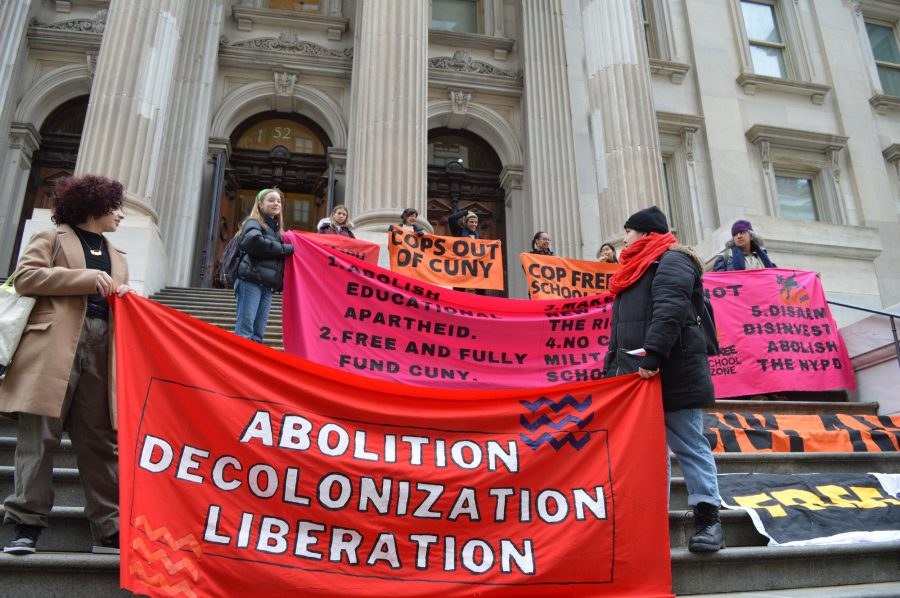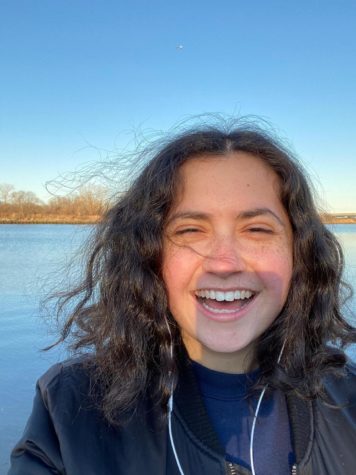Free CUNY, other groups protest outside the Department of Ed.
February 10, 2020
Free CUNY is a group of students and professors who want a completely free public university system.
The banners, signs and social media outreach of the protesters listed five central goals that they were going to be fighting for. It read, “Abolish educational apartheid; Free and fully funded CUNY; Make MTA work for New Yorkers, not for the rich; Disarm, disinvest, and abolish the NYPD; No cops or military recruiters at our schools.”
Efforts to get CUNY to be fully funded by the state government and, in turn, tuition-free, have been under way for several years, and in most cases by way of protests and rallies.
The demand of “cops out of CUNY” was exacerbated after two incidents during a protest at a December CUNY Board of Trustees meeting at Baruch College. John Jay College of Criminal Justice adjunct professor Sami Disu fell on the ground while being escorted from the meeting by campus security.
Many protesters from the Free CUNY side said this was a result of Disu being shoved, but campus police said he tripped.
The second incident occurred a few minutes later after the public, including the protesters, were removed from the Board of Trustees meeting room.
Brooklyn College student Hailey Lam was detained by security in a classroom and threatened with arrest for ignoring instructions to remain quiet.
Other demands from the protesters centered around abolishing or retracting police presence. These demands were a response to police violence toward people of color and the recent increase of police officers in the subways, an effort aimed at cracking down on fare evasion.
Despite this clear list, the speakers touched on unrelated topics, such as the anti-literacy laws that once kept American slaves from getting an education and the country’s treatment of native tribes.
The rally was opened by a Free CUNY member who led the group’s chant of their “territorial acknowledgement,” meant to acknowledge the indigenous people that used to live in Manhattan.
“We begin by acknowledging that we are standing on the homeland of the Lenape, which, and always has been, a place of indigenous movement,” the protesters chanted back to her.
“Our actions, at their most fundamental level, stand in solidarity with the Lenape and all indigenous peoples, here and beyond, whose land was stolen to create settler states, and who continue to live under siege, surveillance, and colonial structural violence on their own occupied land.”
“Students Speak Out” was also attended and supported by other organizations, including Teens Take Charge — which consisted of high school students skipping school — and the Youth Activists – Youth Allies Network.
These groups spoke about segregated high schools, military recruiters in public schools and a “school-to-prison pipeline.”
“In the conversation surrounding integration, myself and many other students have seen two very distinct sides,” said Teens Take Charge representative Melody Moulton.
“On one side, there are those that insist on keeping screens and tests such as the SHSAT in place because they are benefitting from them. On the other side, students of color, who make up over 70% of the New York City public high school system, are demanding integration happen now, because they are being wholly disadvantaged and need change to experience an equitable quality of education.”
Members of the different groups walked around passing out pamphlets and papers — a magazine from the co-organizers of the rally with their demands, a flyer from the People’s Power Assemblies NYC that explains why police and prisons should be abolished and a communist newspaper called The Challenge with the bolded front-page headline reading “Organize Against Racist Killer Cops.”
Overall, the series of rallies and protests demonstrated these groups’ self-proclaimed radical ideologies, centering around the disadvantage of people of color through policing, tuition and recruitment systems.
Editor’s Note: this story was previously publshed in Kings County Politics. The Ticker was given permission for the reprint.








